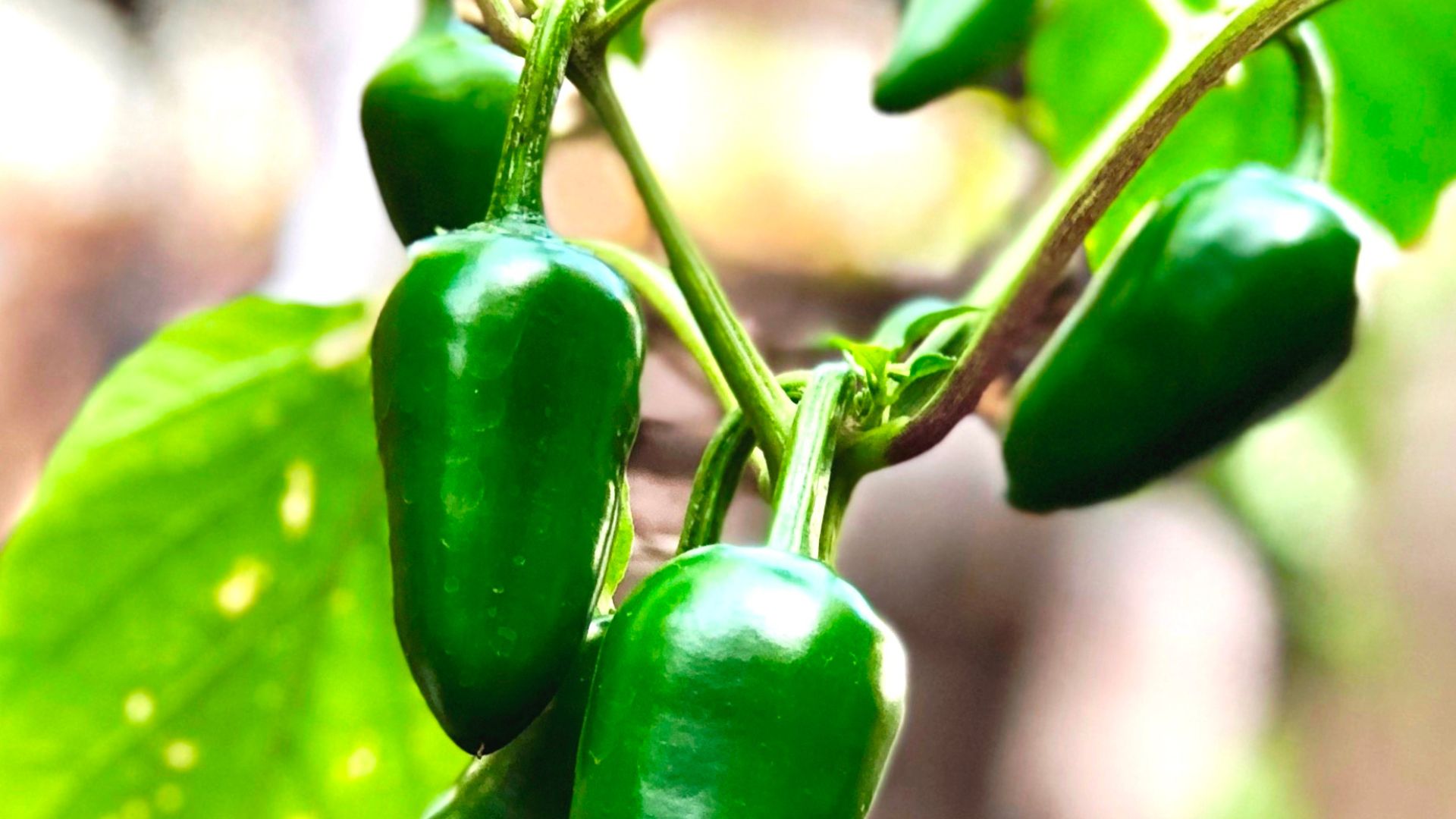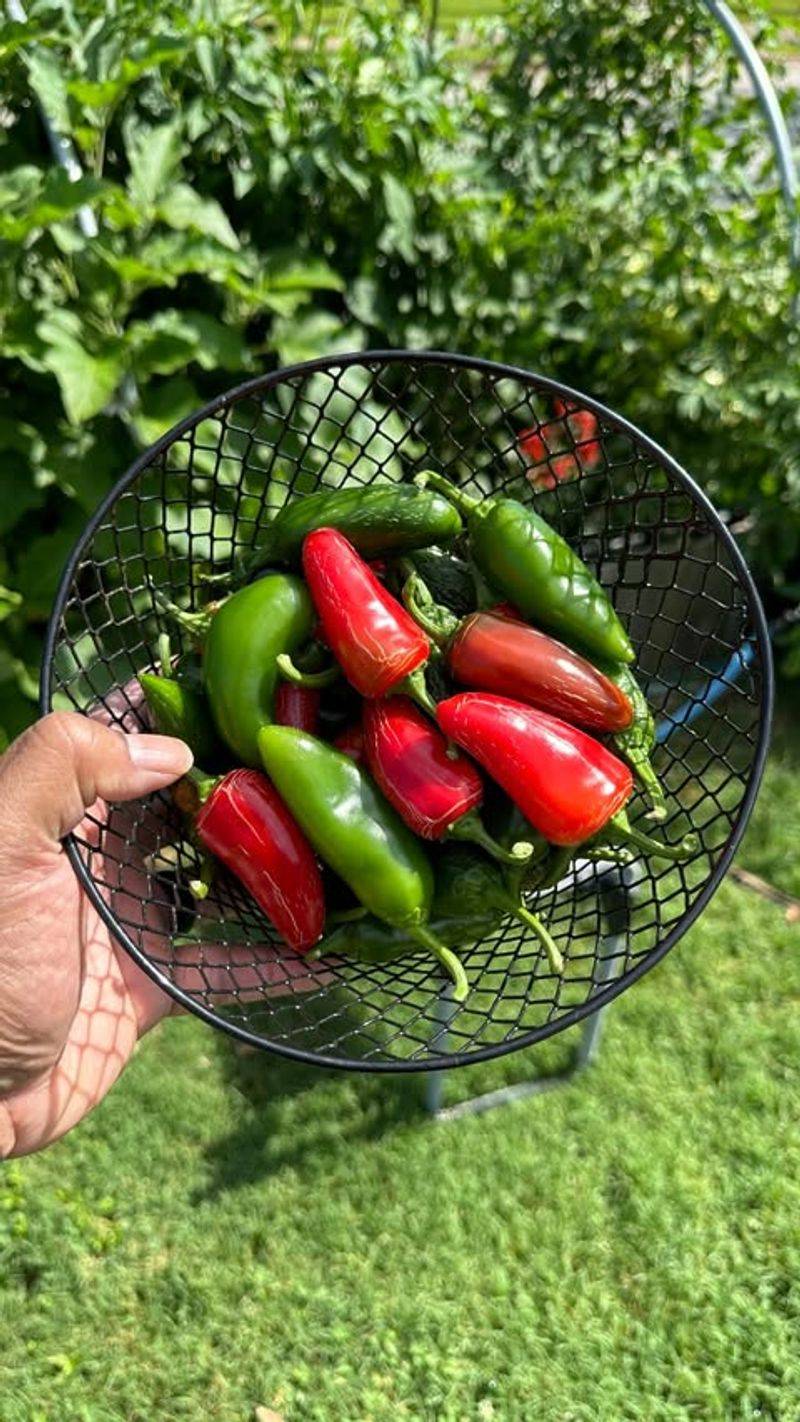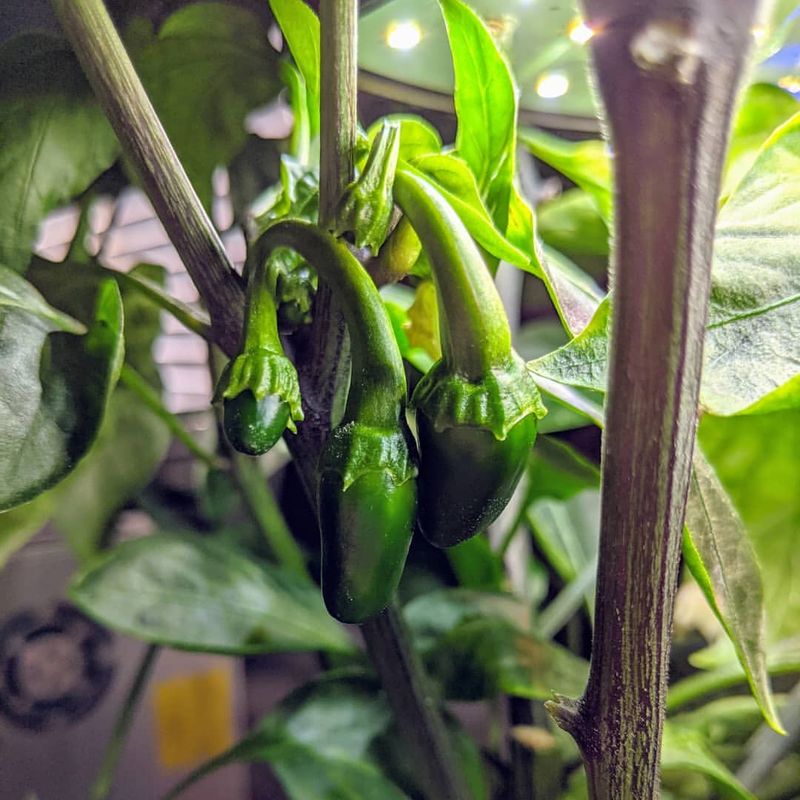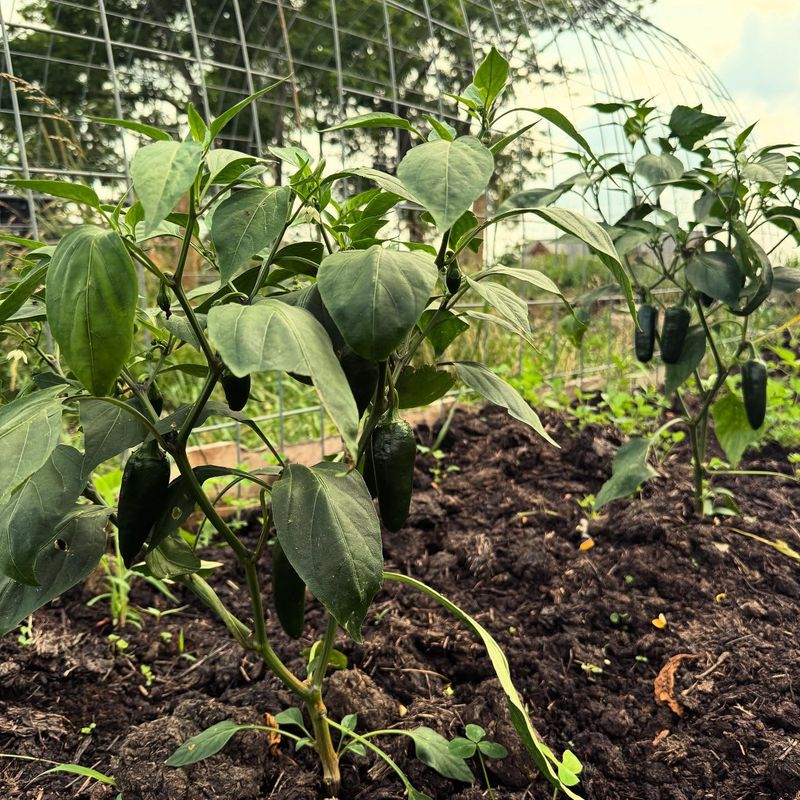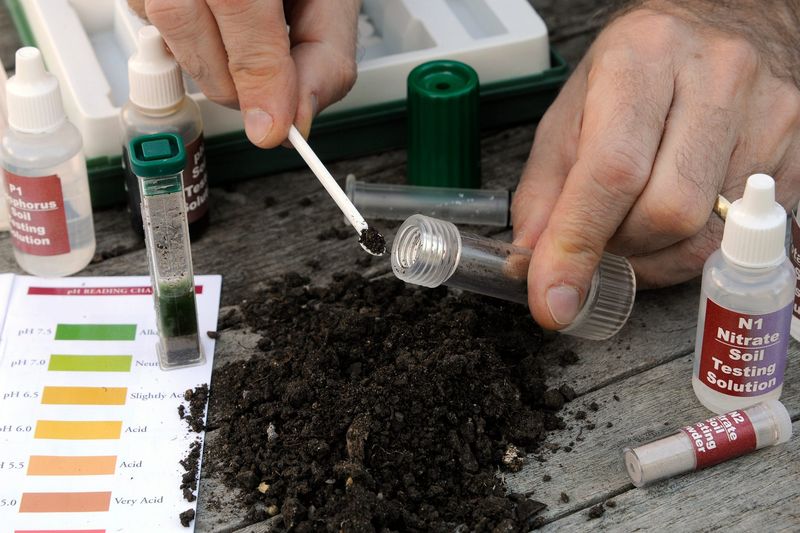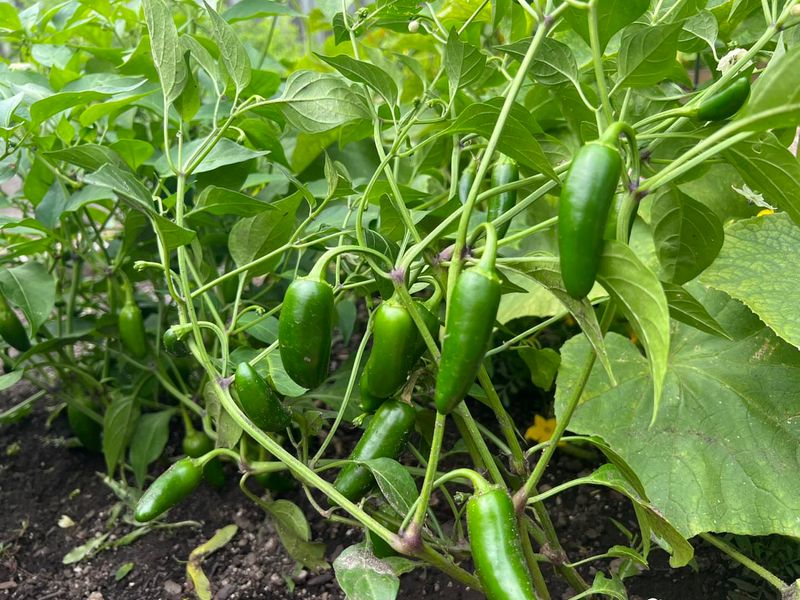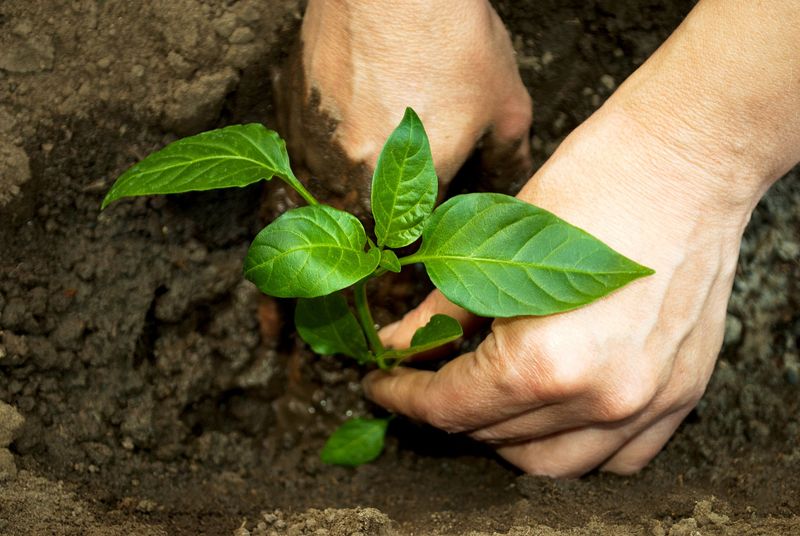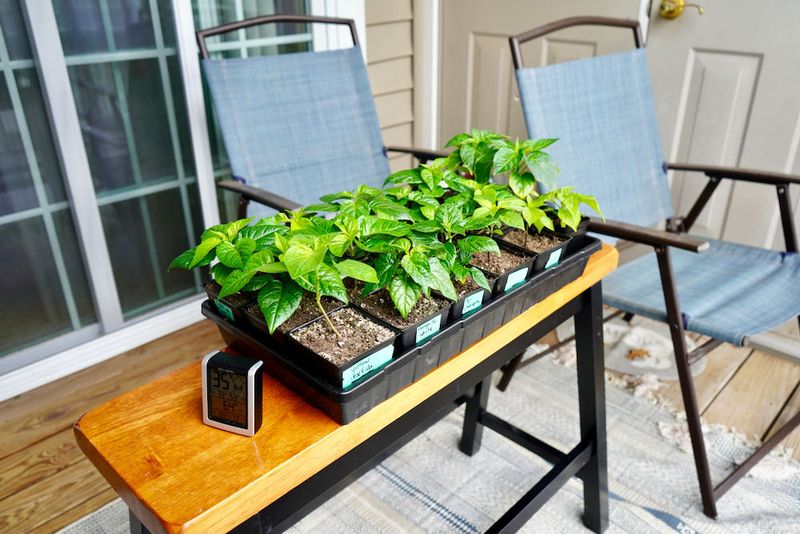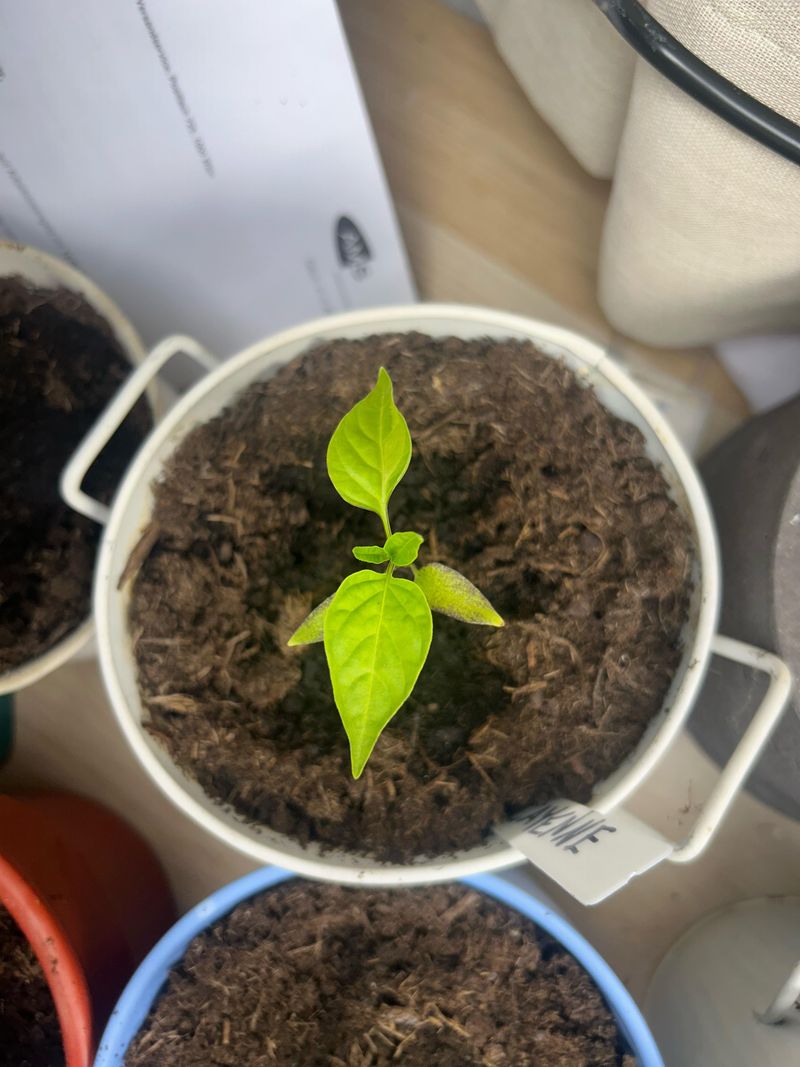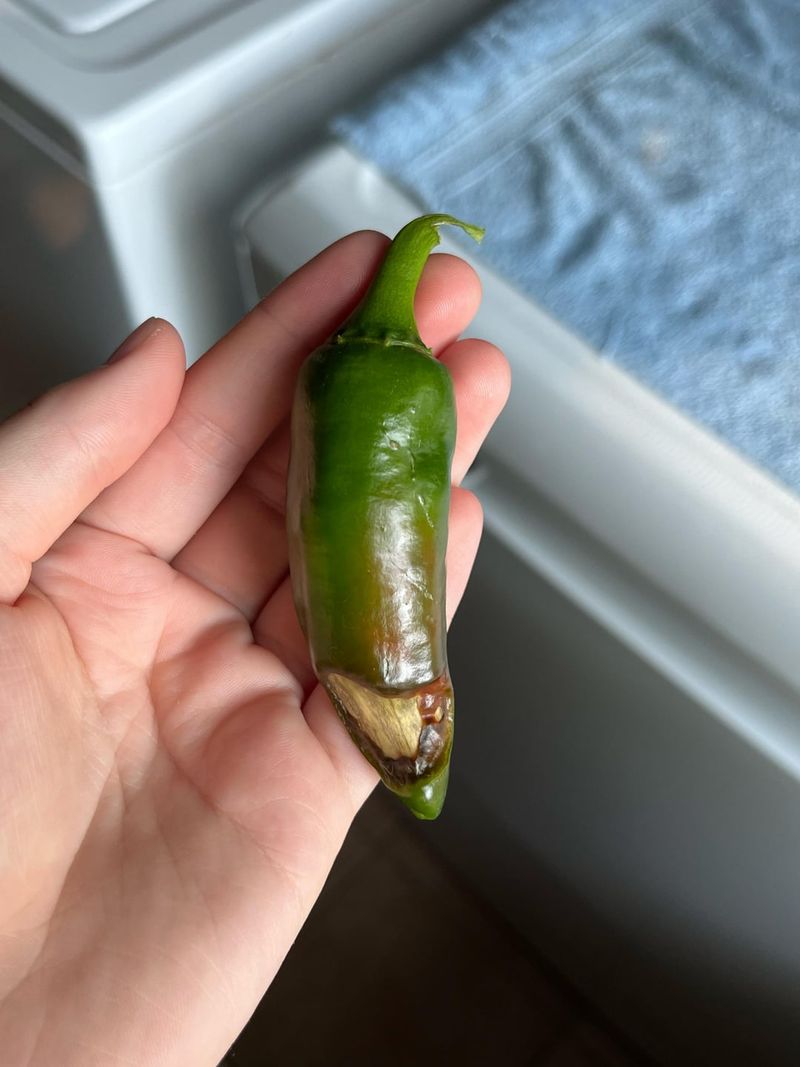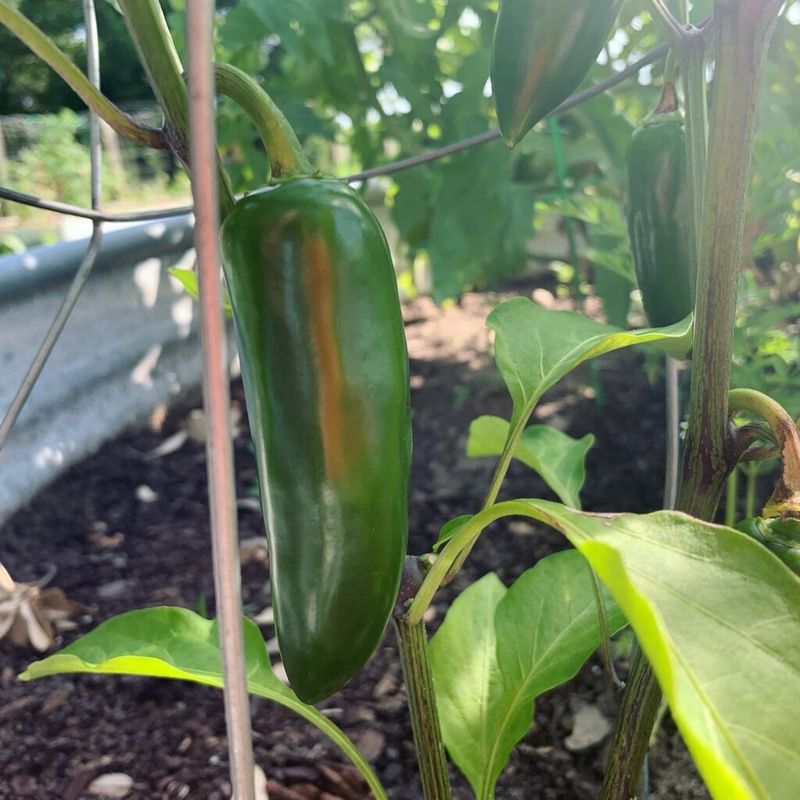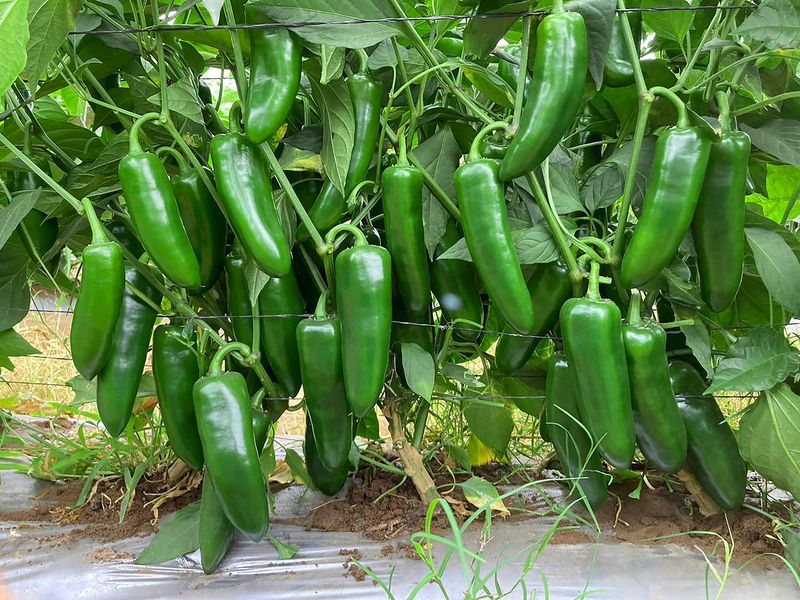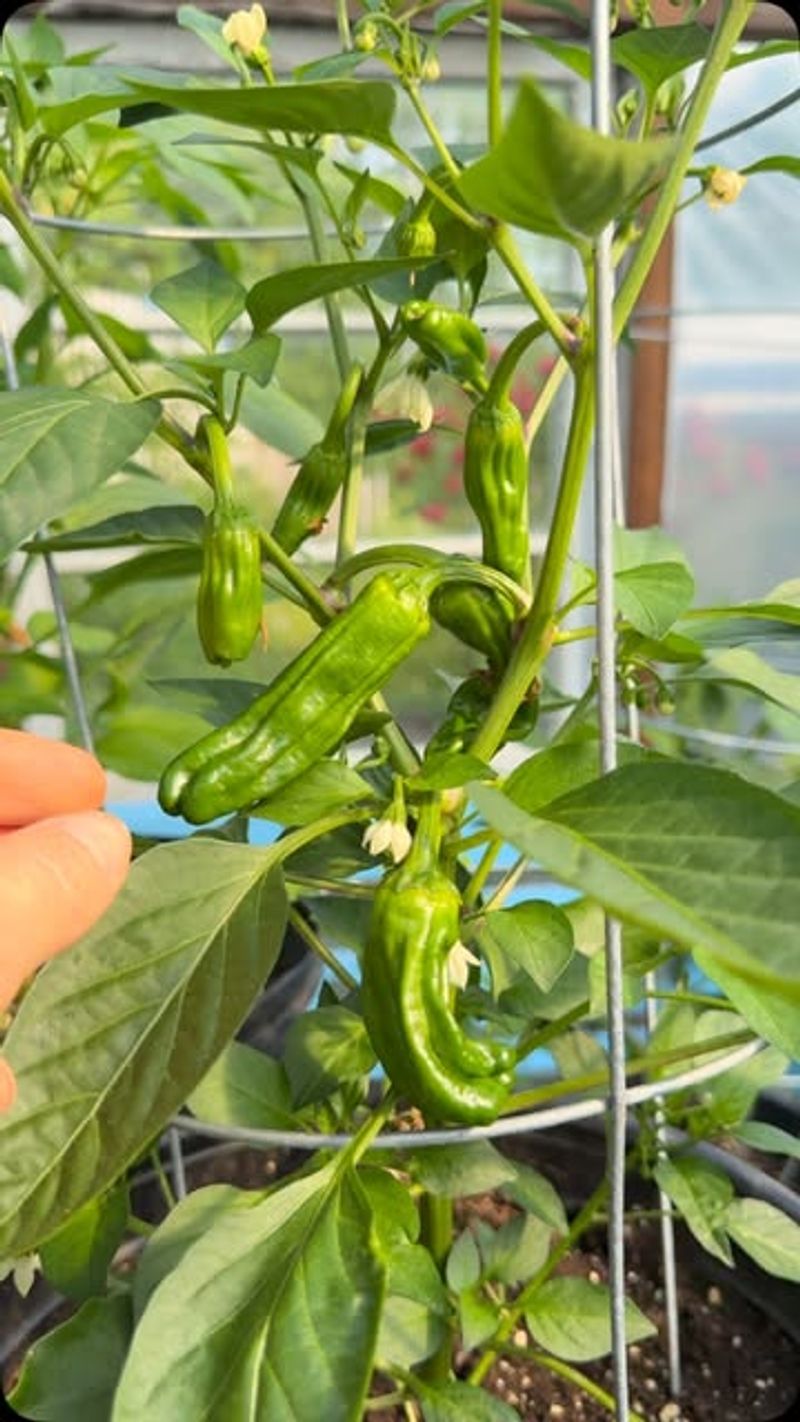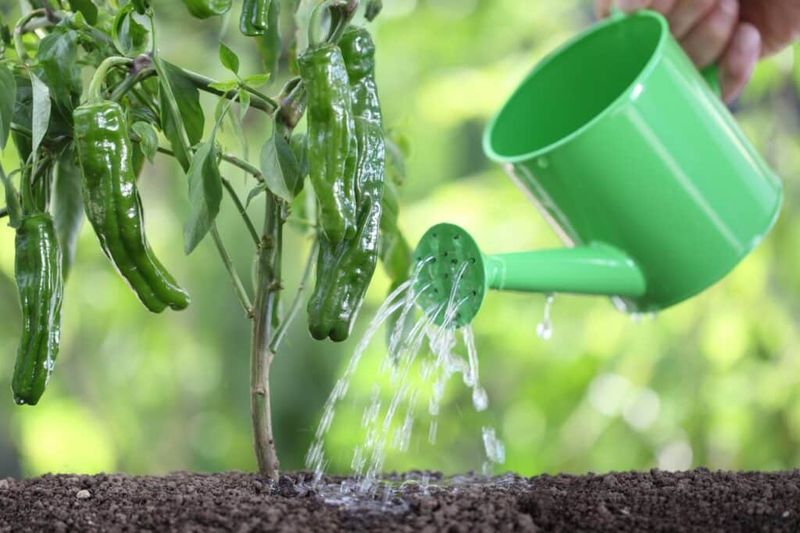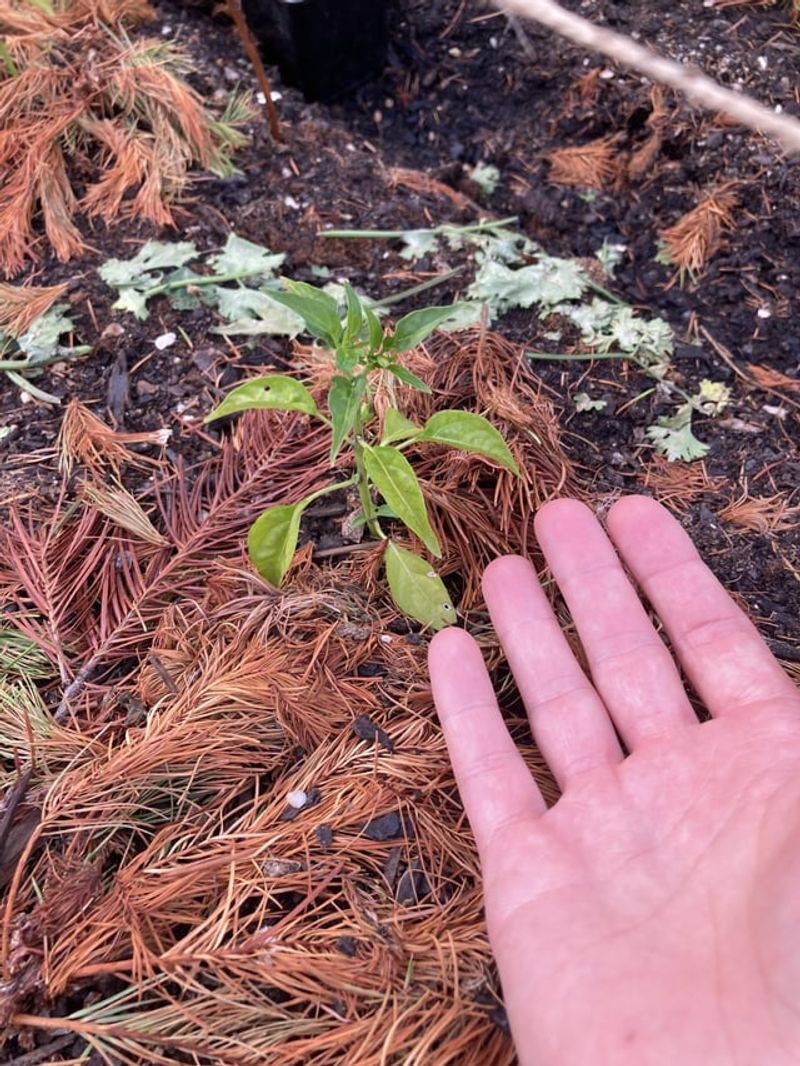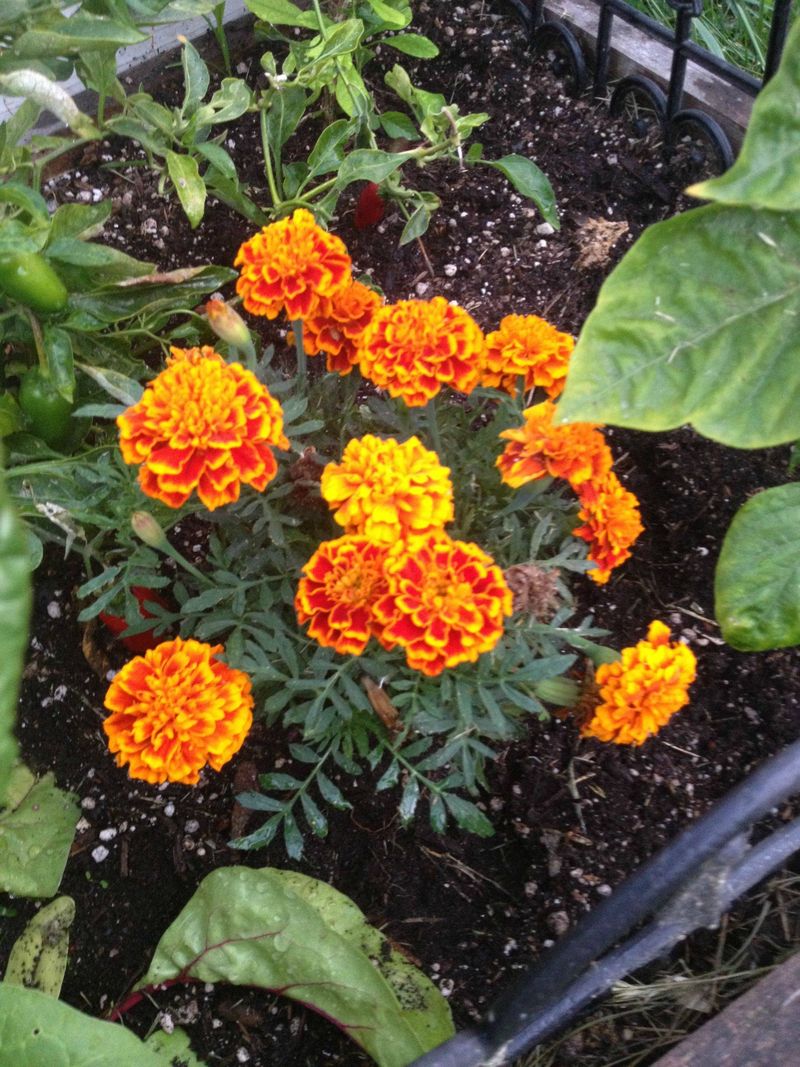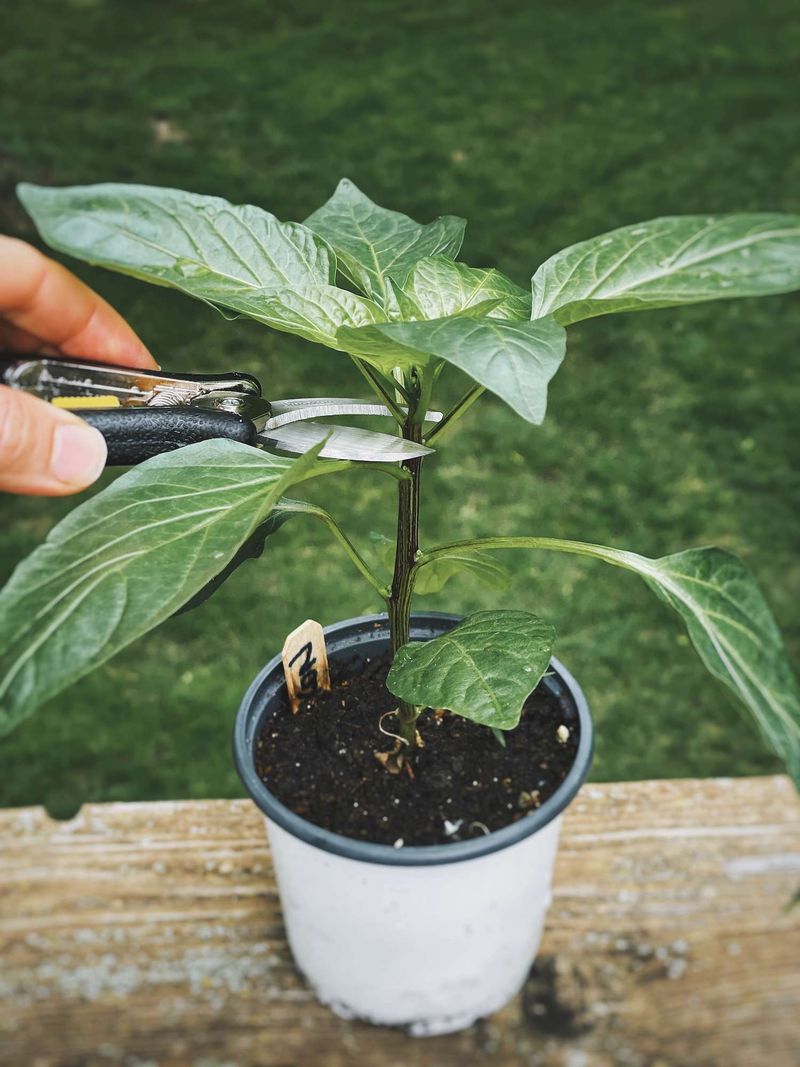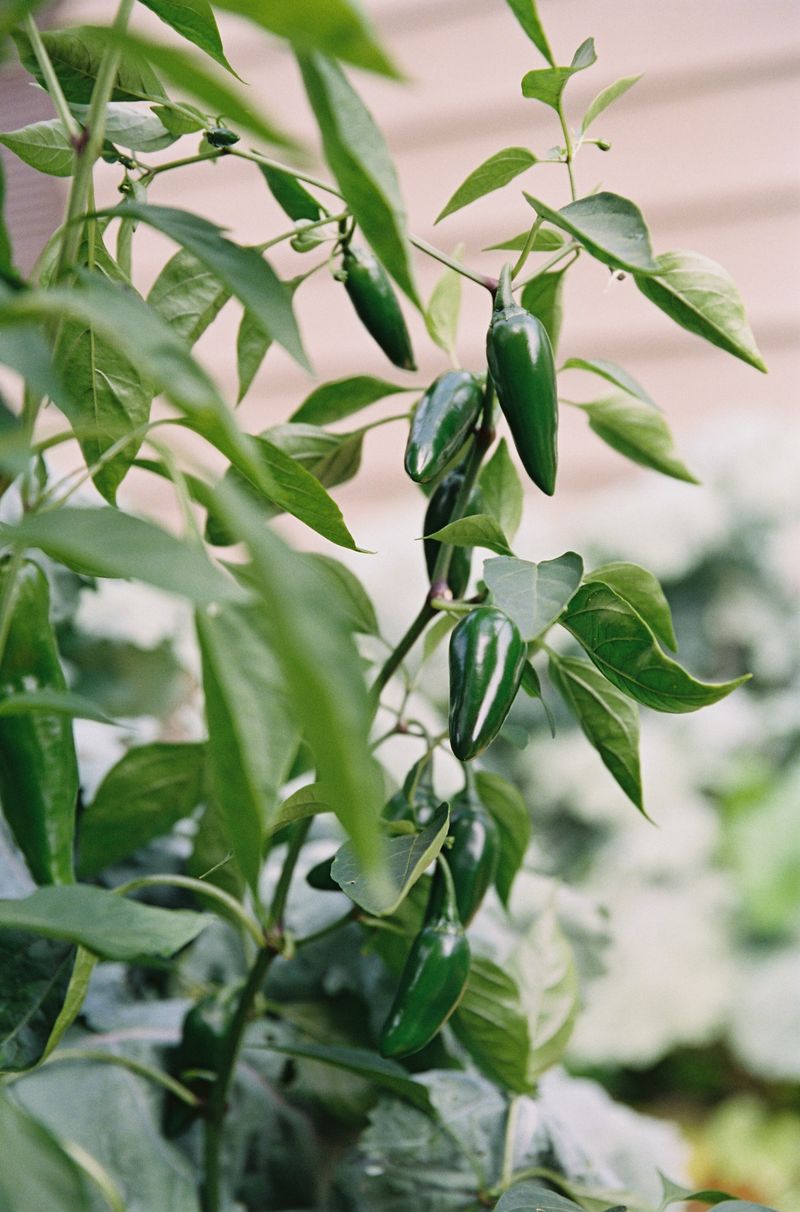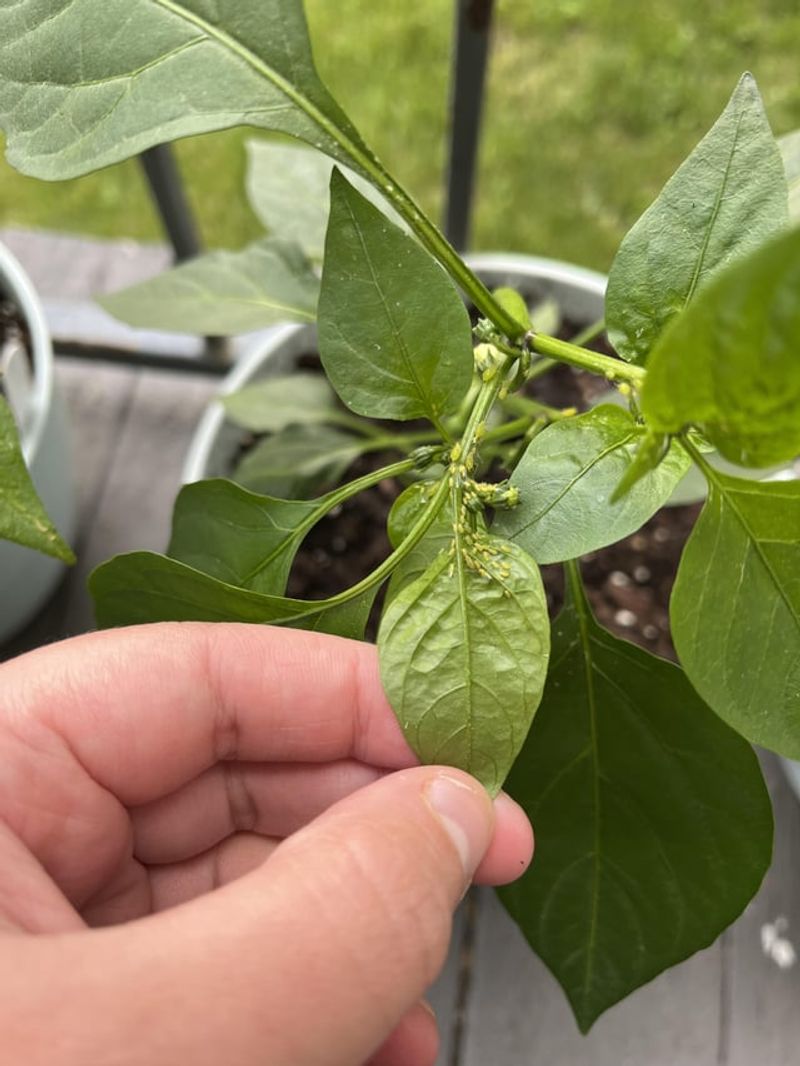Growing jalapeños is a spicy thrill—but they’re a little pickier than they let on. Skip the guesswork and you’ll avoid weak plants or sad, flavorless fruits. Knowing what not to do is half the battle when it comes to getting a fiery, healthy harvest.
Common slip-ups include overwatering, planting in chilly soil, or crowding them too close together. Jalapeños love heat, space, and consistent moisture—not soggy feet or cold snaps. Treat them right and they’ll reward you with plump, vibrant pods.
From choosing the right fertilizer to watching for pests, it’s all about balance. Patience and a bit of pepper wisdom go a long way. Nail the basics—and dodge the troublemakers—and your jalapeño crop will be one to brag about.
1. Starting Seeds Too Late
Jalapeños need a long growing season to reach their full potential. Many gardeners underestimate how much time these peppers need from seed to harvest—typically 70-85 days after transplanting.
Getting a late start means your plants might not have enough time to produce a good crop before the weather turns cold. I learned this lesson the hard way my first year, with barely-formed peppers when frost arrived.
Start seeds indoors 8-10 weeks before your last spring frost date to give your plants the best chance at a productive season.
2. Overcrowding Plants
Jalapeño plants need room to breathe and grow. When planted too close together, they compete for nutrients, water, and sunlight, resulting in stunted growth and reduced yields.
The first time I grew jalapeños, I crammed six plants into a space meant for three. The result? Small plants with few peppers. Such a rookie mistake!
Space your jalapeño plants at least 18-24 inches apart in rows that are 24-36 inches apart to allow for proper air circulation and growth.
3. Inconsistent Watering
Jalapeños hate water stress. Alternating between drought and flood conditions causes blossom drop, cracked fruits, and bitter-tasting peppers.
My neighbor’s jalapeños suffered from this exact problem last summer. His feast-or-famine watering schedule left him with half the harvest I got from the same number of plants.
Aim for consistent soil moisture by watering deeply when the top inch of soil feels dry. During hot weather, this might mean watering every 2-3 days rather than a heavy soak once a week.
4. Skipping Soil Testing
Growing jalapeños in mystery soil is like cooking without tasting—you’re just hoping for the best. These peppers thrive in soil with specific pH and nutrient levels that you can’t determine by just looking.
For years, my peppers were mediocre until I tested my soil and discovered it was too acidic and lacking phosphorus. Making the appropriate amendments transformed my harvest.
Test your soil before planting and aim for a slightly acidic pH between 6.0 and 6.8 with balanced nutrients for the healthiest jalapeño plants.
5. Choosing Poor Locations
Jalapeños are sun worshippers, requiring at least 6-8 hours of direct sunlight daily. Planting them in partial shade or too close to buildings will result in leggy plants with few peppers.
When I moved my pepper bed from the east side of my yard to the south side, my yield nearly doubled. The difference in sun exposure made all the difference.
Select a spot with full sun exposure, good air circulation, and protection from strong winds that could damage branches when they’re heavy with fruit.
6. Transplanting Too Early
Cold soil is kryptonite to jalapeño seedlings. Planting out too early when soil temperatures are below 65°F can stunt growth for weeks or even kill your precious plants.
The year I rushed to get my peppers in the ground in early May, they sat dormant for nearly a month while later plantings quickly caught up and surpassed them. Patience would have yielded better results.
Wait until nighttime temperatures consistently stay above 55°F and soil has warmed to at least 65°F before moving seedlings outdoors.
7. Neglecting Hardening Off
The shock of moving from a cozy indoor environment to the harsh outdoors can severely set back jalapeño seedlings. Skipping the hardening off process often leads to sunscald, wilting, and stunted growth.
My first attempt at growing jalapeños resulted in sunburned plants because I transferred them directly from my grow shelf to the garden. What a painful lesson!
Gradually acclimate seedlings to outdoor conditions over 7-10 days, increasing exposure time daily while protecting from harsh midday sun and strong winds.
8. Over-Fertilizing Young Plants
Bombarding young jalapeño plants with high-nitrogen fertilizer often creates lush foliage at the expense of pepper production. The plants look healthy but produce few fruits.
For years I wondered why my beautiful, bushy jalapeño plants yielded so few peppers until a master gardener pointed out my fertilizer overkill. Switching to a balanced approach changed everything.
Use a low-nitrogen, phosphorus-rich fertilizer after plants are established, and avoid feeding during the first two weeks after transplanting when roots are still settling in.
9. Ignoring Calcium Needs
Calcium deficiency in jalapeños leads to blossom end rot—those disappointing black spots on the bottom of peppers that render them inedible. Many gardeners miss this crucial nutrient requirement.
After losing half my crop to this issue one season, I now religiously add crushed eggshells to my planting holes. This simple addition has virtually eliminated the problem from my garden.
Incorporate calcium sources like garden lime or eggshells into your soil before planting, and consider a foliar calcium spray if symptoms appear during the growing season.
10. Planting In Poor Drainage
Jalapeño roots despise sitting in water. Planting in poorly draining soil or containers without drainage holes leads to root rot, yellowing leaves, and eventually plant death.
The difference between my raised bed peppers and the ones I tried growing in my clay-heavy garden plot was night and day. The waterlogged clay soil produced sickly plants that never thrived.
Ensure good drainage by amending heavy soils with compost and perlite, or consider raised beds. For containers, always use pots with drainage holes and well-draining potting mix.
11. Harvesting Too Late
Waiting too long to harvest jalapeños signals the plant to slow down production. When peppers turn red on the vine, the plant thinks it’s completed its reproductive cycle.
My harvest doubled the year I started picking peppers regularly when they reached full size but were still green. The plants kept producing new flowers and fruits throughout the season.
Pick jalapeños when they’re firm, glossy, and 3-5 inches long—usually green, unless you specifically want red, more mature peppers for their sweeter, spicier flavor.
12. Skipping Succession Planting
Relying on a single planting of jalapeños often leads to feast-or-famine harvests. You’ll have too many peppers at once, then none at all.
Last summer, I staggered my plantings three weeks apart and enjoyed a steady supply of fresh jalapeños from July through October. This approach has completely changed my pepper-growing strategy.
Start a second batch of seeds 3-4 weeks after your first to extend your harvest season. Even a month’s difference in planting times can provide a more consistent supply throughout the growing season.
13. Using Cold Water
Shocking jalapeño plants with ice-cold water causes stress that can stunt growth and reduce fruit set. Temperature fluctuations are particularly harmful during flowering.
After switching to room-temperature water collected in my rain barrel, I noticed my plants responded with more vigorous growth and better pepper production. It’s a small change with significant impact.
Use water that’s close to air temperature, ideally collected rainwater or tap water that has sat out overnight to reach ambient temperature and allow chlorine to dissipate.
14. Forgetting To Mulch
Bare soil around jalapeño plants leads to moisture fluctuations, weed competition, and soil-borne disease splash-up during rainstorms. Mulch is not just an aesthetic choice—it’s functional.
The year I finally mulched my pepper beds with straw, I cut my watering needs in half and significantly reduced the leaf spots that had plagued previous crops. What a time and plant saver!
Apply 2-3 inches of organic mulch like straw, shredded leaves, or chemical-free grass clippings around plants after the soil has warmed, keeping it an inch away from stems.
15. Ignoring Companion Planting
Planting jalapeños in isolation misses opportunities for natural pest control and growth enhancement. Certain plant combinations can significantly improve your pepper patch performance.
My jalapeños grown alongside basil and marigolds had noticeably fewer aphid problems than those grown alone. The aromatic companions seemed to confuse and repel the pests naturally.
Consider planting basil, marigolds, or nasturtiums near your jalapeños to deter pests. Avoid planting near fennel or kohlrabi, which can inhibit pepper growth.
16. Pruning Incorrectly
Many gardeners either over-prune jalapeño plants or don’t prune at all. Both approaches can limit your harvest potential and plant health.
When I started selectively removing the first few flowers and lower leaves touching the soil, my plants developed stronger stems capable of supporting heavier pepper loads. The temporary sacrifice led to better long-term production.
Remove the first few flowers to encourage stronger plant development, prune leaves touching the soil to prevent disease, and consider topping very tall plants to promote bushier growth with more fruiting branches.
17. Overlooking Support Needs
Heavy fruit loads can break jalapeño branches, especially during storms. Assuming these plants can stand on their own without support is a common oversight.
After losing several productive branches during a summer thunderstorm, I now stake all my pepper plants. This simple precaution has saved countless peppers from touching the ground and rotting.
Place stakes or small tomato cages around jalapeño plants when transplanting. The support becomes crucial once plants are laden with peppers, preventing branch breakage and keeping fruits off the ground.
18. Neglecting Pest Monitoring
Assuming your jalapeños are pest-free without regular inspection can lead to sudden infestations that devastate your crop. Early detection makes all the difference in effective control.
Weekly inspections saved my pepper crop from aphids last year. Catching them early meant I could use a simple soap spray rather than watching helplessly as they multiplied to unmanageable levels.
Check the undersides of leaves weekly for aphids, look for holes from hornworms, and watch for signs of spider mites during hot, dry weather. Early intervention with organic controls is much more effective than reactive treatment.

